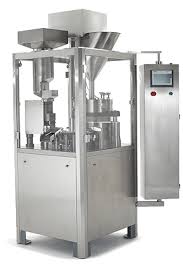The Modern Manufacturing Edge
Efficiency in packaging, especially with a competitive market today is not just an advantage while doing business but has turned into the necessity. For those looking to increase their packaging velocity and precision you need an automatic cartoning machine. These machines are usually capable of processing 60 to as many as 1200 cartons per minute, depending on the model and complexity in question. By comparison, manual packaging may achieve 5 cartons/min or up to something like 10 boxes / min if a great worker and super- speed bottling packer.
Savings of Cost and Labor
Integration of automatic cartoning machine into your production line offers you room for saving costs in form of labour wages. It requires a handsome workforce to pack it manually, especially in large scales. Doing so automates it, freeing up manpower for higher impact activities in the production or management, leading to increased overall workforce productivity. According to the authors, industry studies demonstrate that implementation of automation can yield packaging labor cost reductions in a range up to 70%, based on historical data and operative scale with respect traditional manual means.
Quality and Genuineness
The one thing you do not want in the food packaging is for quality to be sacrificed. Automation ensures a level of quality that manual process puts at risk for businesses. Automatic cartoning machines are fitted with accurate sensors and software that guarantee each carton is packed, labeled, and sealed consistently which substantially decreases the chances of error due to human involvement which otherwise could result in product returns or customer unhappiness. In the medical, pharmaceutical, or food and beverage industries reliable packaging of goods is essential.
Scalability and Flexibility
Just as businesses airways grow, their packaging always need to evolve too. Superior Design In terms of design, automatic cartoning machines are very scalable and flexible. The same machine can be easily configured for different sizes and types of products, with the changeover between packaging formats accomplished quickly. This flexibility enables companies to quickly and efficiently respond new market requirements or expanded changes in their product line without resorting to significant repackaging system reconfiguration.

Enhanced Safety
With automated systems, workplace safety increases significantly. Cartoning machines minimize human contact with heavy machinery or repetitive motions and reduce the risk of workplace injuries regulatory-compliance-gmbh. Industry reports confirm that companies transitioning into an automated packaging solution typically see up to 50 percent fewer workplace accidents, leading to a safer work environment and less associated healthcare and liability costs.
REDUCTION OF WASTE FOR SUSTAINABLE LIVING
In these - green save the earth from human folly environmentally conscious times, cutting waste makes more sense morally and monetarily. Automated cartoning systems are accurate, they use up the exact quantity of materials required; hence cutting significantly on material wastages via measurements and corresponding cuts. To achieve this accuracy, it means that resources are not wasted and the level of waste bi-products can be kept to a minimum encouraging practices focused on sustainability whereby less money is spent managing wasteful processes.
Hugging Technology for Improved Yield
Ultimately, using an automated cartoning machine is not just a matter of upgrading technology; it involves making strategic investments in the long-term success and growth of your business. These efficiencies and the factors surrounding cost reduction, quality assurance (QA), scalability & safety grant enough of a reason for automation to make its way into Packaged Industry almost entirely. And, by linking these systems together businesses are not just able to keep up but they position themselves as a forward-thinking leader in operational management.